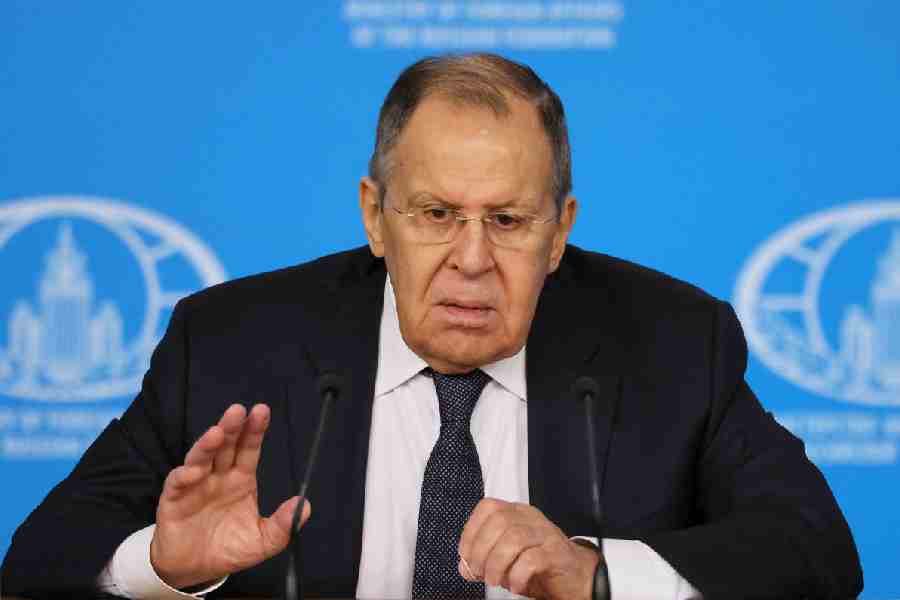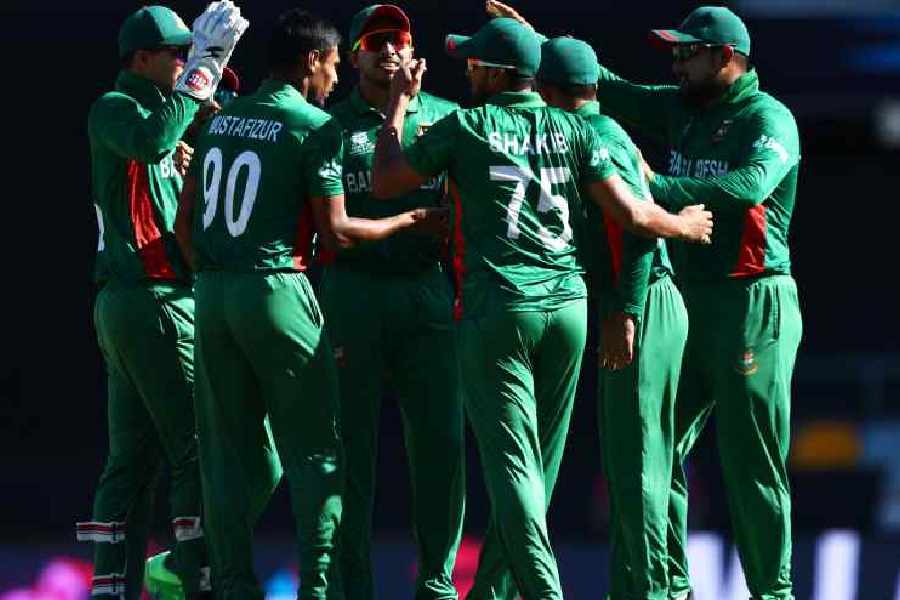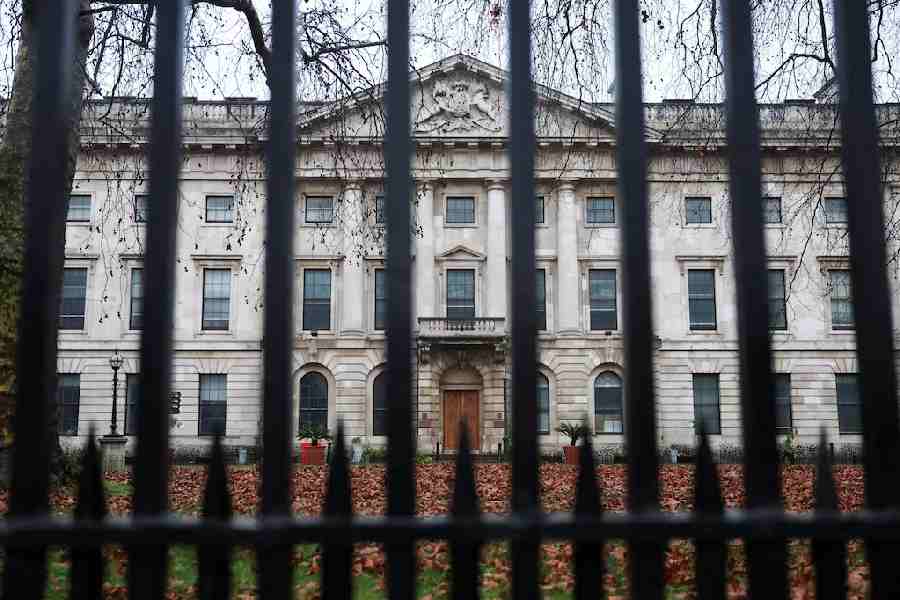It says something about the almost criminal lack of state recognition for Hindi film music that before A.R. Rahman was bestowed the Padma Bhushan in 2010, no composer had received the honour. Not SD Burman, not Shankar-Jaikishan (S-J), not RD Burman. SD and S-J had received the Padma Shri, RD not even that. Among music directors, only Naushad has received the Dadasaheb Phalke award. While singers Kanan Devi, Manna Dey, Lata Mangeshkar and Asha Bhosle have all been recipients of the Dadasaheb Phalke, composers have cut a sorry figure (RC Boral, Pankaj Mullick and Bhupen Hazarika received theirs for their contribution not so much to the Hindi music scene as for their work in Bengal and Assam.)
As such, the Padma Bhushan for Pyarelal — of the famed Laxmikant-Pyarelal, or L-P — is apt recognition for one of the most successful composers in Indian film music. However, the honour is making news for all the wrong reasons, with Laxmikant’s wife Jaya Kudalkar and daughter Rajeshwari Laxmikant making the very pertinent point that the award should have been given jointly. After all, through the four decades that they ruled Hindi film music, like their hyphenated predecessors Shankar-Jaikishan, and their contemporaries Kalyanji-Anandji, when it comes to the music they created, it is not possible to see Laxmikant and Pyarelal in isolation, one separate from the other.
In the plethora of features and news reports that have highlighted this, what seems to have been lost is the contribution that Laxmikant-Pyarelal made to Hindi film music. A duo who were on top of their game in each of the four decades since the 1960s when they debuted with Parasmani (1963) and created a sensation with ‘Hansta hua noorani chehra’. They also ruled the airwaves like few other composers, with instances where Binaca Geet Mala, the popular countdown show, often featured as many as 10 to 13 L-P songs out of the 16 they aired each week. A lot of this had to do with the fact that they were probably the most prolific of composers in the history of Hindi cinema. In the years between 1963 and 1998, they are reported to have scored for close to 800 films, making for an average of over 20 films a year.
Of course, this involved the unhealthy practice of undercutting, which they pioneered. As Laxmikant admitted to music critic and biographer Rajiv Vijaykar, ‘It was simple logic: if you are paying 10 rupees for something and we give you the same quality for two rupees, will you spend more? We simply wanted the best banners and filmmakers… Besides, in this industry, you have to keep yourself in the limelight. We had to keep coming out with films, otherwise, we could not hope to survive in a field where two of every three films flop!’
Needless to say, quality often suffered and detractors have often spoken about what I call the ‘unremarkable cacophony’ of the music of L-P. However, at their best they had few equals and no composer in the history of Hindi cinema had scores that defined the music of the decade for over four decades. And while it’s impossible to do justice to their output in a short feature, here are albums I consider influential, where almost all songs stand out in quality and popular recall.
The 1960s: Dosti and Do Raaste
Bookended by Dosti (1965) and Do Raaste (1969), this was the decade that established L-P as the go-to composers for producers looking for a hit score. For all their critics, almost everyone agrees that Dosti ranks among the best of Hindi film albums, with five sublime Mohammed Rafi that are for the ages: ‘Chahoonga main tujhe’, ‘Rahi manwa’, ‘Mera toh jo bhi’, ‘Jaanewalon zara’ and ‘Koi jab raah na paaye’. And though Rajesh Khanna zoomed to the top with Aradhana (1969), the music of Do Raaste played as important a role, with chartbusters like ‘Bindiya chamkegi’, ‘Yeh reshmi zulfein’ and ‘Chhup gaye saare’ existing in harmony with Kishore Kumar’s superlative ‘Mere naseeb mein’.
In between they had some of the biggest musical hits of the decade in Farz, Milan, Shagird and Aaye Din Bahar Ke, with delectable melodies like ‘Aa jaane ja’ (Inteqam) and ‘Nazar na lag jaaye’ (Night in London) vying for space with chartbusters like ‘Dil wil pyaar vyaar’, ‘Sawan ka mahina’ and ‘Mast baharon ka main aashiq’.
The 1970s: Bobby and Amar Akbar Anthony
The seventies are seen as RD Burman’s decade and rightly so. He redefined the sound of Hindi film music with films like Hare Rama Hare Krishna, Yaadon Ki Baaraat and Jawani Diwani. However, L-P matched RD almost film for film. Bobby (1973) remains one of the defining scores of the decade with chartbusters galore, and made it almost mandatory for teenybopper romances to have great music in order to succeed. In 1977, Amar Akbar Anthony offered another blockbuster.
If Kishore Kumar had ‘My name is Anthony Gonsalves’, L-P proved instrumental in Rafi’s comeback after years of being overshadowed by Kishore Kumar, giving him the brilliant numbers ‘Shirdi waale’, ‘Parda hai’ and ‘Tayyab Ali’. It also featured the only song in Hindi cinema that brought together Lata Mangeshkar, Kishore Kumar, Mukesh and Mohammed Rafi: ‘Humko tumse ho gaya hai pyaar’.
For those who complained about the lack of melody in L-P’s scores, one just has to offer ‘Mere dil mein aaj kya hai’ (Daag, 1973) and ‘Ek pyaar ka nagma hai’ (Shor, 1972), while ‘Main jatt yamla pagla deewana’ (Pratiggya, 1975) had Dharmendra creating history with his iconic dance.
The 1980s: Karz and Ek Duje Ke Liye
Even though I mention these two films as the defining ones, the 1980s had L-P deliver a string of musical hits, even as RD Burman ran out of steam. Karz (1980) was influential in ushering the disco revolution in Hindi cinema (with Qurbani that released almost simultaneously) two years before Bappi Lahiri broke through with Disco Dancer. ‘Om shanti om’, ‘Paisa ye paisa’ and ‘Ek haseena thi’ have become almost anthemic, while ‘Dard-e-dil’ made waves as a ghazal crafted in purely Western beats. Ek Duje Ke Liye (1981) witnessed L-P at their transcendental best, again, like Bobby, for a love story featuring two debutants. While all the songs made history, of special mention are ‘Tere mere beech mein’ and the soulful Lata song ‘Solah baras ki’.
In a decade that many consider the nadir of Hindi film music, L-P had the superlative Sargam with Rafi coming up with three evergreen numbers. And if it was the dafli in Sargam, it was the flute in Hero, another musical hit featuring newcomers, whose flute refrain remains as instantly recognisable 40 years later. They also made Reshma a household name with the brilliant ‘Lambi judaai’ in Hero.
Before the decade was over, the duo had films like Tezaab and Ram Lakhan, which owed their success purely to their iconic songs ‘Ek do teen’ and ‘One two ka four’. In between they also demonstrated that they had it in them to create something as melodiously magnificent as ‘Saanjh dhale gagan taley’ and ‘Mann kyun bahka’ (both Utsav) and one of the best classical scores in Hindi cinema, Sur Sangam.
The 1990s: Saudagar and Hum
Even while finally running out of steam in the face of competition from a new crop of composer duos like Anand-Milind and Nadeem-Shravan, L-P had some mega hits in the first half of the decade. Saudagar is by no stretch of imagination a film of any merit, but it boasted a song that became a catchphrase for young lovers, ‘Ilu Ilu’, while the playful ‘Imli ka boota’ and ‘Saudagar sauda kar’ were on every bus and autorickshaw stereos and paan-stand transistors.
While ‘Jumma chumma’ catapulted Hum to box-office glory, proving that even Amitabh Bachchan needed the magic of L-P, the composers also came up with the mellifluous duet ‘Sanam mere sanam’ and the quintessential ‘we are one family’ song, ‘Ek doosre se karte hain pyaar hum’. A couple of years later, they had another chartbuster with the infamous ‘Choli ke peechhey’ and ‘Nayak nahin’ which proved all over again their hold on the popular pulse. Take these songs out of the films and all you are left with are forgettable duds.
(Shantanu Ray Chaudhuri is a film and music buff, editor, publisher, film critic and writer)










